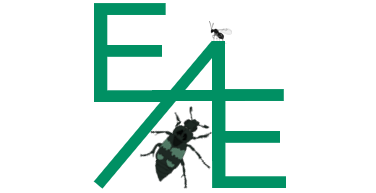Multimodal signalling in the courtship of male parasitoid wasps: testing the multiple messages hypothesis
DFG STO 966/3-1
From 05/2023 to 05/2026Principal Investigator: Johannes Stökl
Staff: Janka Plate
Animals communicate with each other using visual, chemical, acoustical, vibratory and even electrical signals. However, animals are not restricted to one signal modality when sending important signals, but frequently combine different modalities into one multimodal signal. But why should animals invest the costs of using two modalities in one signal? One hypothesis is that the modalities convey different information (multiple messages hypothesis). For example, it is possible that one modality conveys species identity while the other modality conveys information on the signaler’s quality (species recognition hypothesis). Courtships are widespread in the animal kingdom and usually strongly affect the mating success of the signaler. Consequently, it is not surprising that courtships are often complex, utilizing not only one but several modalities. However, even though courtship displays have been intensively studied over the last years, the role of multiple messages in the evolution of multimodal courtship signals is still unclear. Here we propose to use parasitoid wasps of the genus Leptopilina as a model system to study multimodal courtship signals and to test whether the different signaling components contain different pieces of information. Males of Leptopilina show a complex courtship display consisting of two elements: wing fanning and antennal stroking. Our aim is to test the hypothesis that the two signal modalities of the male courtship (wing fanning = vibratory and antennal stroking presumably transfers a male antennal pheromone = chemical) correspond to the species recognition hypothesis with the chemical modality signaling the species identity and the vibratory modality signaling the quality of the male. In a first experiment, we will test for a correlation between the ability of males to elicit matings in females and the properties of the wing fanning as well as the composition of the males’ chemical profile. In a second step we will manipulate the characteristics identified in the first experiment by, for example, slowing down the frequency of the wing fanning or by modifying the chemical profile and measure the effect on the male’s mating success. In the third part we will measure the species specificity of both modalities used during courtship. To this end, we will compare the wing fanning characteristics and the chemical profile of three species of Leptopilina and an outgroup. Furthermore, will test the hypothesis that the chemical profile of the wasps reflects the relatedness of individuals and is used to avoid inbreeding. In part four of the project, we want to test, whether the males chosen by the females are of higher quality than rejected males or whether such pairings result in more viable offspring. We are planning to measure the male’s quality by analyzing the number of sperms transferred during mating and offspring quality by the ability of the offspring to overcome the immune system of the host.

